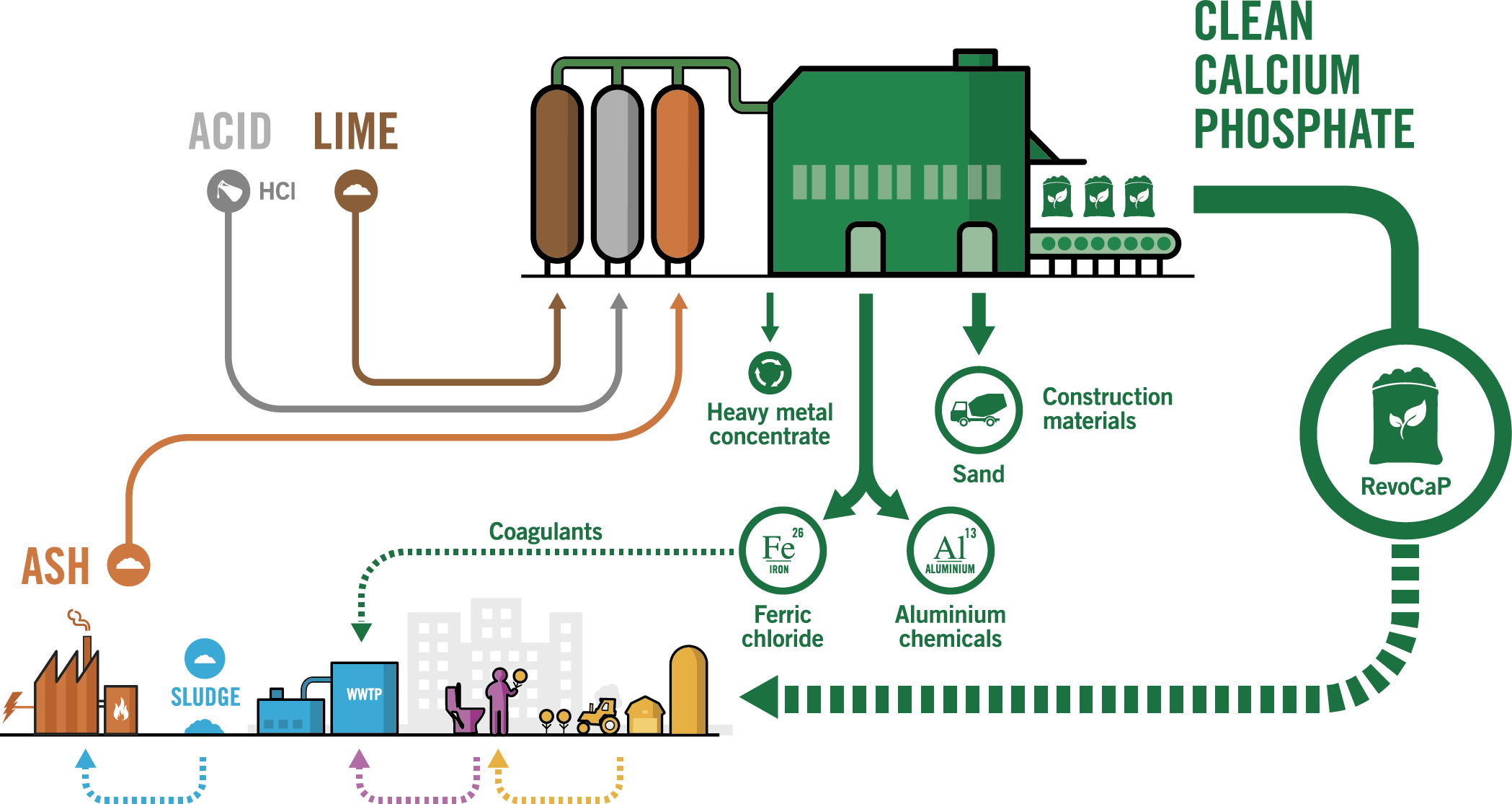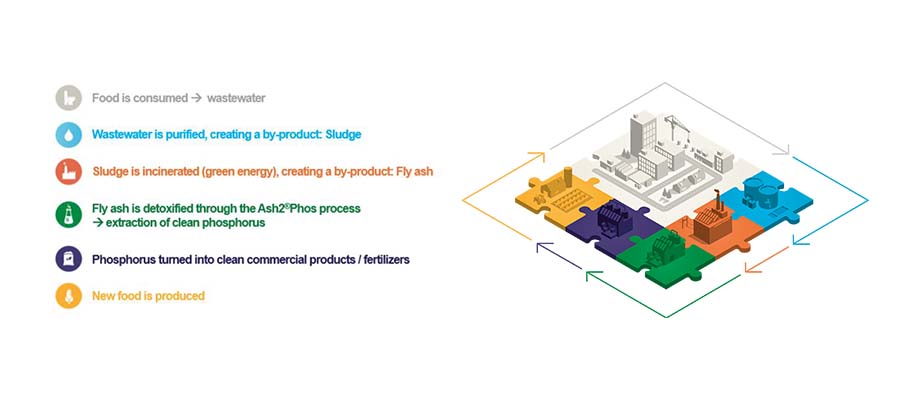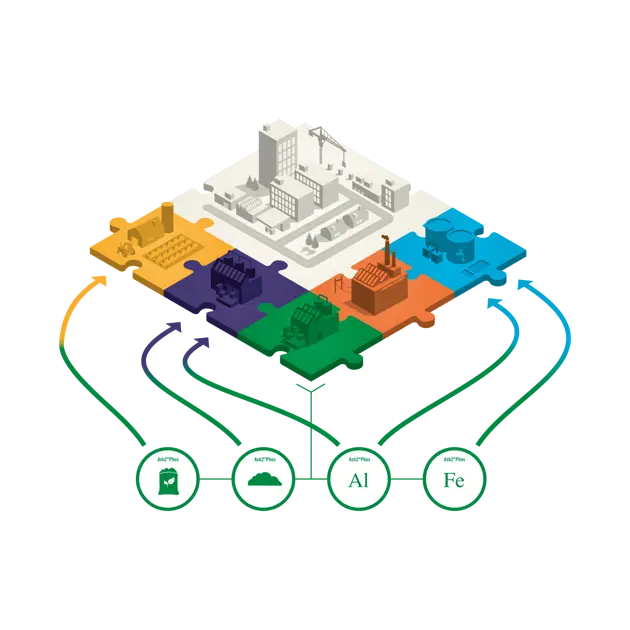Closing the loop for phosphorus
With a growing population and increased food production the availability of phosphorus will become even more important. The Ash2Phos technology enables domestic production of cleaner and safer phosphorus, suitable for all parts of the phosphorus industry, contributing to a circular economy and a reduction of primary resource.
The high-grade phosphorus (purity greater than 98%) extracted by Ash2Phos is converted into a pure, non crystalline calcium phosphate designated RevoCaP.
This can be used as slow-release fertiliser, animal feed phosphate or further processed into conventional fertilisers. Co-products are ferric chloride, aluminium chemicals and sand fraction.

Life depends on a limited non-renewable resource
All living things need phosphorus to live and grow – plants, animals and humans. In order to produce the food we need in the society, we therefore need to add phosphorus within the agriculture.
Today we mine the phosphorus we need mainly in Russia and Marocco. 95 % of the total worldwide phosphorous-ressources are under control of 10 states – they can control the prices and some of them are politically unstable. Unfortunately mineable phosphate rock is a limited non-renewable resource that may only last an additional 100 years and phosphorous from some sources, especially in Africa, contain other substances such as Uranium and Cadmium.
The mined, virgin phosphorus is then processed to different phosphorus products.
Phosphorus in our wastewater systems is wasted
At the same time, our wastewater systems contain significant amounts of phosphorus that should be recovered and recircled back to the food- and industry system. However, today most of the phosphorus in the wastewater systems is wasted on e.g. landfills. The phosphorus in a wastewater treatment plant ends up in the sludge, often containing contaminations we don’t want to recircle back to society. To change this, from 2029 on, sewage sludge from bigger wastewater treatment plants in Germany has to be incinerated individually and the phosphorous must be recycled out of the ashes.
If we were able to recycle the phosphorus in our sewers and reuse it in agriculture – we could replace about 50% of the phosphorus needed for food production. In this way, we can save significant resources and use the resources we already have mined over and over again.
Recovering phosphorus from the sewage sludge ash
By incinerating the sewage sludge, we get rid of organic contaminants at the same time as the phosphorus is concentrated.
The phosphorus in the ash is however not in an available form for plants and contaminated with heavy metals, which also have been concentrated in the incineration step.

Climate friendly, detoxified and sustainable phosphorus product
This is where the Ash2Phos technology comes in to play. In our process we recover the phosphorus as a high-quality and clean calcium phosphate product, since the process includes a detoxification step. The detoxification step removes more than 96% of the contaminants.
Finally, the Ash2Phos technology enables local production of a climate friendly, safer phosphorus, suitable for conventional farming, organic farming and feed phosphates.
Recovering more than only phosphorous
The Ash2Phos technology also includes steps for the recovery of iron and aluminum from the sewage sludge ash - as Ferric Chloride (FeCl3) and Sodium Aluminate (NaAlO2).
These co-products are recovered in a purified, ready-to-market quality and can either directly be used as coagulants in wastewater treatment, or in the chemical industry, as basis for a multitude of production processes.
Therefore, the Ash2Phos process also contributes to a circular economy and a reduction of primary resource use in these industries.
